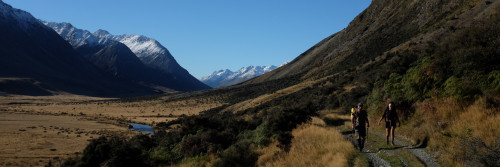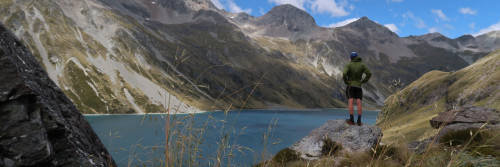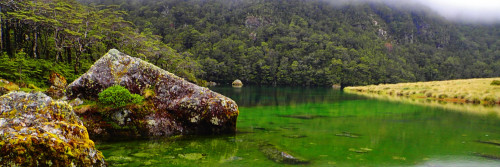News and media
King Country Karst
.jpg)
Overlooking Te Kuiti.
The Waitomo–Te Kuiti walkway is now complete, except for a short section down through Brook Park, the area fringed by pine trees below.
It’s a bit rough in place, but the handshake farming agreements are done, the stiles are in place, and our 12-km track from Waitomo to Te Kuiti is ready. Local historian Christine Chaplow, a member of Te Araroa Waikato Trust secured most of the agreements. Farmers in these King Country valleys have been good to us. Be good to them. No dogs, no bikes and during the 1st August – 30th September period, no-one at all. These are the calving and lambing months.
The Te Kuiti end is not yet complete, so the best start is from Waitomo, 800 metres up Fullerton Road, where you’ll see a stile over a fence.
That begins a 6-hour medium-grade tramp. Expect hills with 150-metre ascents and descents. The track is steep sometimes, but it'll be one of our best pastoral outings. It pauses on top of high karsts to stare across the King Country's low agriculture, and tumbled limestone hills that rise to formidable volcanic summits – north to Pirongia, east to Pureora, and south to Ruapehu. Too, on the lowest land, the track enters the Pehitawa Forest.
.jpg)
Pehitawa Forest is an extensive Kahikatea remnant. The trees stand with their feet in wet ground, and so as not to step on anyone's toes,Te Araroa Waikato Trust put through a raised and drained track.
A Waikato Tramping Club group was first to walk the new trail last month.
.jpg)
.jpg)
(1).jpg)
.jpg)
Crossed one highway - Oparure Road
.jpg)
(1).jpg)
Crossed the Mangapu River on Te Araroa's new and elegant little swing bridge, built by local contractor Dan Bustard.
_.jpg)
And picked up on local history . . .
In 1883 Maori chief Mahuki seized a railway surveying party, Wilson Hursthouse and others. Mahuki remained furious at Hursthouse’s role in sacking the peaceful village of Parihaka. The pakehas peered from their prison shed to see Maori writing their names on pigs before slitting the pig throats. Around then, the door of the cell crashed open, and there stood their rescuer Te Kooti, himself an outlaw. It happened, says Christine Chaplow (pictured above) right here. Whitinui Joseph, great grandfather of the All Black Jamie Joseph, and a kinsman of Mahuki, celebrated the peace by planting two trees - a British holly and a Maori pohutukawa. The pohutukawa, now huge, stands behind Christine as she recounts the story.
.jpg)
Finally the team climbed to the 263 metre trig above Te Kuiti. They then winged their entry down onto Te Kuiti’s Brook Park – it’s a scramble through the pines to link up first with Brook Park’s Red Trail, then the Blue Trail exiting at the northern outskirts of Te Kuiti. Thanks to Noel Sandford and his teams for much of the track work. Local farmers Ollie Mitchell, Martin Chaplow and Laurie Bateup put in many of the stiles on the southern section, and students from Maniapoto Training Agency helped throughout. Thanks to the Native Forest Restoration Trust for letting us through Pehitawa. Thanks also to our generous funders, Trust Waikato, Castle Trust, Environment Waikato, The Mayors Taskforce for Jobs, Apperleys Timber and Inframax.




